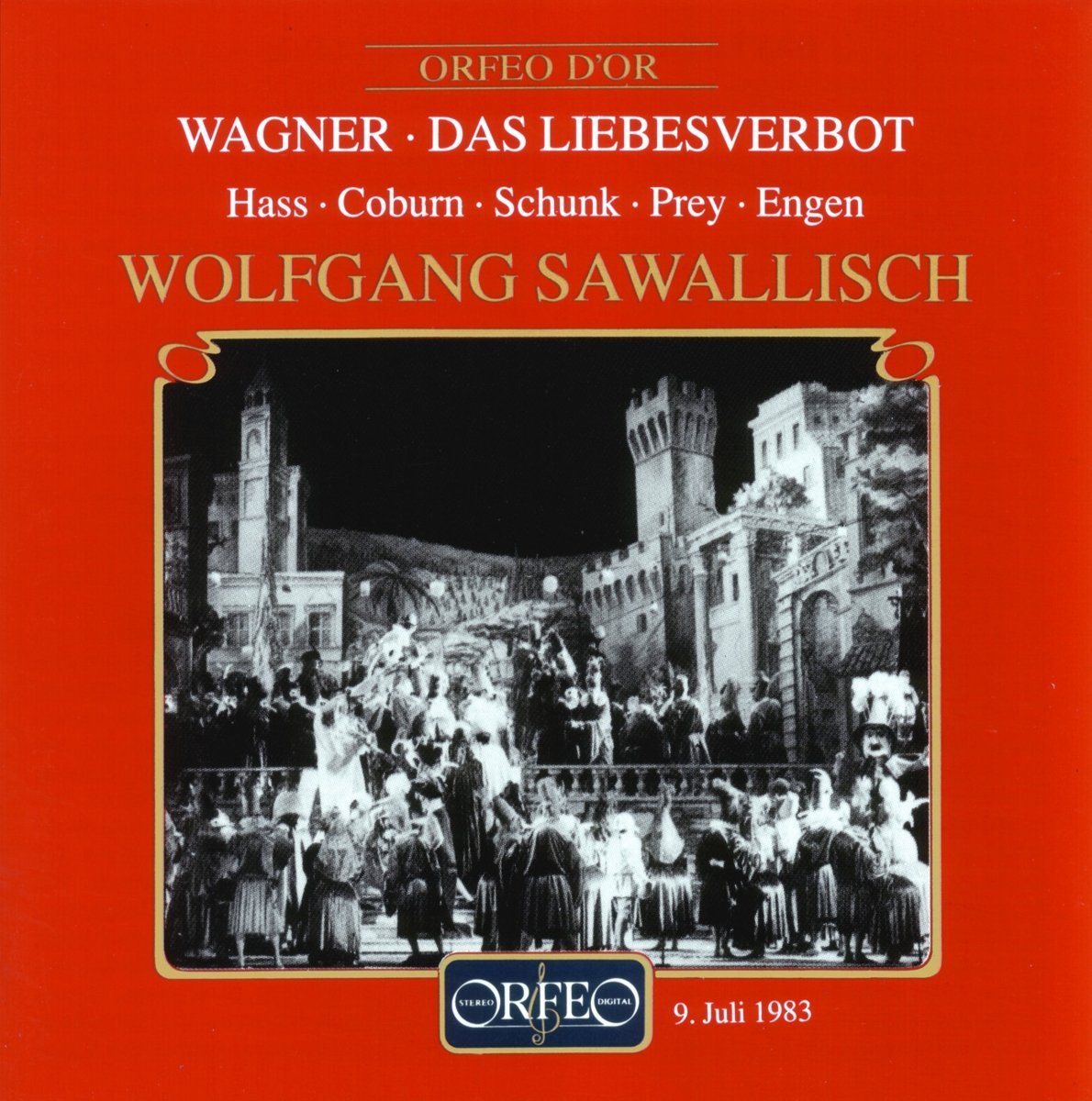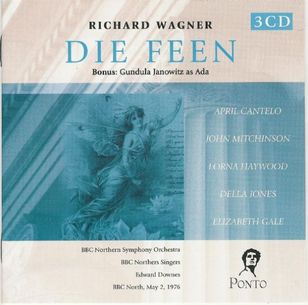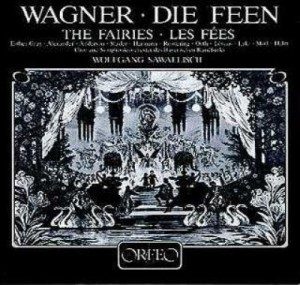I. DAS LIEBESVERBOT (La Défense d’aimer)
Une discographie sélective
1962 – Heinz Imdahl (Friedrich) ; Hilde Zadek (Isabella) ; Kurt Equiluz (Luzio) ; Anton Dermota (Claudio) ; Willy Friedrich (Antonio) ; Ludwig Welter (Brighella) ; Christiane Sorell (Marianna) ; Hanny Steffek (Dorella) ; Ernst Salzer (Angelo) ; Franz Handlos (Danieli) ; Herbert Prikopa (Pontio Pilato) – Robert Heger / Großen Symphonie-Orchesters von Radio Wien und Chor des Österreichischen Rundfunks in Wien – Mélodrame
 1976 – Raimund Herincx (Friedrich) ; April Cantelo (Isabella) ; Alexander Young (Luzio); Ian Caley (Claudio) ; Neil Jenkins (Antonio) ; Lawrence Richard (Brighella) ; Ilse Wolf (Marianna) ; Elizabeth Gale (Dorella) ; William Elvin (Angelo) ; Leslie Fyson (Danieli) ; David Lennox (Pontio Pilato) – Edward Downes /BBC Northern Orchestra and Singers – Oriel Music Society OMS 147/4
1976 – Raimund Herincx (Friedrich) ; April Cantelo (Isabella) ; Alexander Young (Luzio); Ian Caley (Claudio) ; Neil Jenkins (Antonio) ; Lawrence Richard (Brighella) ; Ilse Wolf (Marianna) ; Elizabeth Gale (Dorella) ; William Elvin (Angelo) ; Leslie Fyson (Danieli) ; David Lennox (Pontio Pilato) – Edward Downes /BBC Northern Orchestra and Singers – Oriel Music Society OMS 147/4
1983 – Hermann Prey (Friedrich) ; Sabine Hass (Isabella) ; Wolfgang Fassler (Luzio) ; Robert Schunk (Claudio) ; Friedrich Lenz (Antonio) ; Alfred Kuhn (Brighella) ; Pamela Coburn (Marianna) ; Marianne Seibel (Dorella) ; Keith Engen (Angelo) ; Raimund Grumbach (Danieli) ; Hermann Sapell (Pontio Pilato) – Wolfgang Sawallisch / Bayerisches Staatsorchester und Chor – Orfeo C 345 953
2012 – Michael Nagy (Friedrich) ; Christiane Libor (Isabella) ; Peter Bronder (Luzio) ; Charles Reid (Claudio) ; Simon Bode (Antonio) ; Thorsten Grümbel (Brighella) ; Anna Gabler (Mariana) ; Anna Ryberg (Dorella) ; Franz Meyer (Angelo) ; Kihwan Sim (Danieli) ; Julian Prégardien (Pontio Pilato) – Sebastian Weigle / Frankfurt Opera Chor und Opera and Museum Orchester – Oehms Classics OC 942
II. DIE FEEN (Les Fées)
Une discographie sélective
 1976 – April Cantelo (Ada) ; John Mitchinson (Arindal) ; Paul Hudson (Gernot) ; Richard Greager (Gunther) ; Teresa Cahill (Drolla) ; Don Garrard (Feekönig) – Edward Downes / BBC Northern Orchestra and Singers – Oriel Music Society OMS 148/4
1976 – April Cantelo (Ada) ; John Mitchinson (Arindal) ; Paul Hudson (Gernot) ; Richard Greager (Gunther) ; Teresa Cahill (Drolla) ; Don Garrard (Feekönig) – Edward Downes / BBC Northern Orchestra and Singers – Oriel Music Society OMS 148/4
1983 – Linda Esther Gray (Ada) ; John Alexander (Arindal) ; Jan-Hendrik Rootering (Gernot) ; Norbert Orth (Gunther) ; Cheryl Studer (Drolla) ; Kurt Moll (Feekönig) – Wolfgang Sawallisch / Sinfonieorchester des Bayerischen Rundfunks und Chor des Bayerischen Rundfunks – Orfeo C 062833F
1984 – Gundula Janowitz (Ada) ; Josef Hopferwieser (Arindal) ; Alfred Sramek (Gernot) ; Franz Kasemann (Gunther) ; Rohangiz Yachmi (Drolla) – Sixten Ehrling / Orchester und Chor der Wiener Staatsoper – Mitridate «Ponto» PO 1027
1998 – Sue Patchell (Ada) ; Raimo Sirkiä (Arindal) ; Artur Korn (Gernot) ; Frieder Lang (Gunther) ; Birgit Beer (Drolla) ; Jyrki Korhonen (Feekönig) – Gabor Otvös / Teatro Comunale di Cagliari orchestra e coro – Dynamic CDS 2171/3
(dernière mise à jour : avril 2017)












